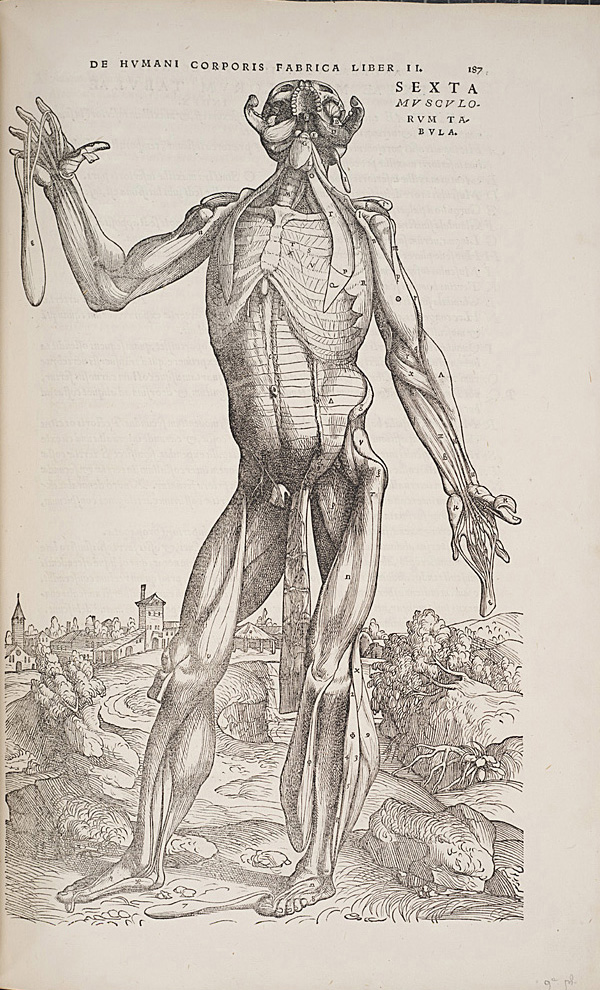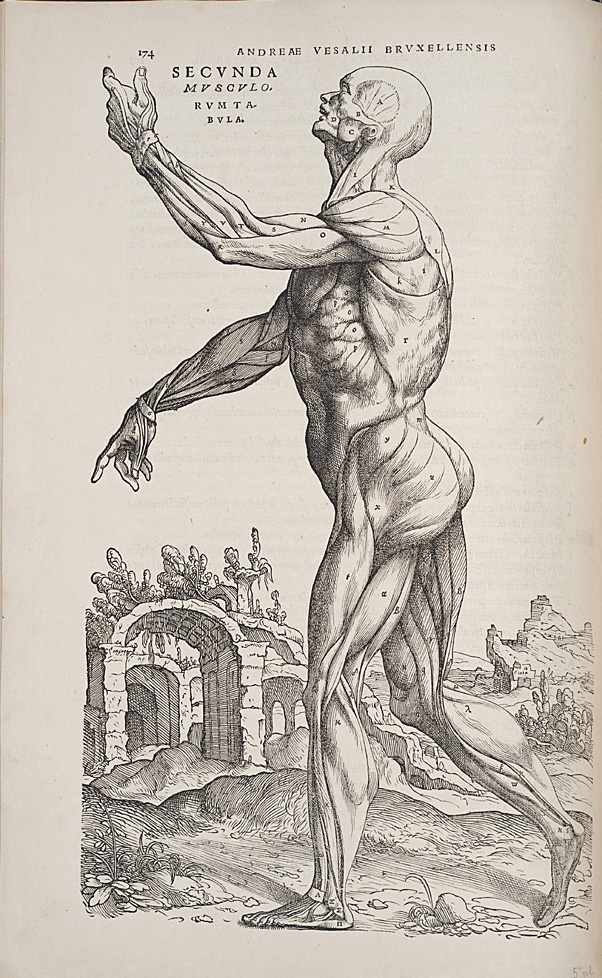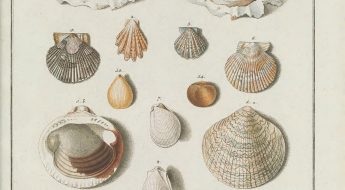Eerie Anatomy: Vesalius’ De humani corporis fabrica
Halloween is quickly approaching and with it comes the traditional decorations of bats, pumpkins, ghosts and of course, skeletons. Back in the 1500’s, one man changed the way the medical world saw the skeletal and muscular systems of the human body. That man, Andreas Vesalius, illustrated anatomical features in his De humani corporis fabrica (On the structure of the human body) in a way never before seen. Although the pages below may seem pretty gruesome, they come from one of the most influential anatomy books of all time.
 |
| Portrait of Vesalius from De humani corporis fabrica, 1543. http://biodiversitylibrary.org/page/48714916. |
Born in Brussels in 1514, Andreas Vesalius came from a family of doctors and apothecaries. When he became a physician himself and began teaching medical school in the 1530’s, most of the standard texts were based on animal dissections and the observations of an ancient Roman doctor named Galen. Vesalius took the unconventional step of performing dissections live in front of his medical students and using human bodies, in some cases those of convicted criminals.
 |
| Standing figure from De humani corporis fabrica, 1543. http://biodiversitylibrary.org/page/48715058. |
In 1543, 29 year old Vesalius published De humani corporis fabrica with elaborate wood-cut illustrations of human dissections. But these bodies weren’t just lying still, as if on a mortuary slab. They were depicted in classical contrapposto. In many instances, layers of tissue artfully fall away to reveal the muscles and ligaments which lie beneath. Despite the artistic quality, the book is considered one of the first anatomical works, accurately representing and describing various systems in the body.
Vesalius gave detailed notes to the printer, helping to assure that the descriptive text matched the appropriate figure and that the artistic style of the plates was preserved. The printer, Johannes Oporinus, felt that these notes were so important that he included them in the publication itself (see “Printer’s Note to the Reader” here: http://vesalius.northwestern.edu/books/FA.b.html). In the text of the book, Vesalius not only describes the systems of the body, but also his recommendations for obtaining skeletons, putting them together and dissecting cadavers.
 |
| Standing figure from De humani corporis fabrica, 1543. http://biodiversitylibrary.org/page/48715045. |
The so-called “Muscle Men” of the book are depicted on a background that is thought to be Padua, where Vesalius taught medicine. If pieced together, the plates’ backgrounds form a full landscape. Vesalius dedicated the book to Holy Roman Emperor Charles V and later went to work as the Emperor’s personal physician.
You can learn more about Vesalius and the history of anatomy books during a live tour in the Smithsonian’s Dibner Library of the History of Science and Technology via Periscope on Thursday, October 29th at 1pm (EST). Head of Special Collections, Lilla Vekerdy, will highlight a few of the rare books, including Vesalius’, that helped transform the way that medical professions studied the human body.
If you’d like to explore more of De humani corporis fabric on your own, check out the recently-added copy from the Getty Research Institute (via the Internet Archive) in BHL.
We hope you’ll join us on Oct. 29 for the Eerie Anatomy Periscope. Make no bones about it, it will be a ghoulishly good time!






Leave a Comment